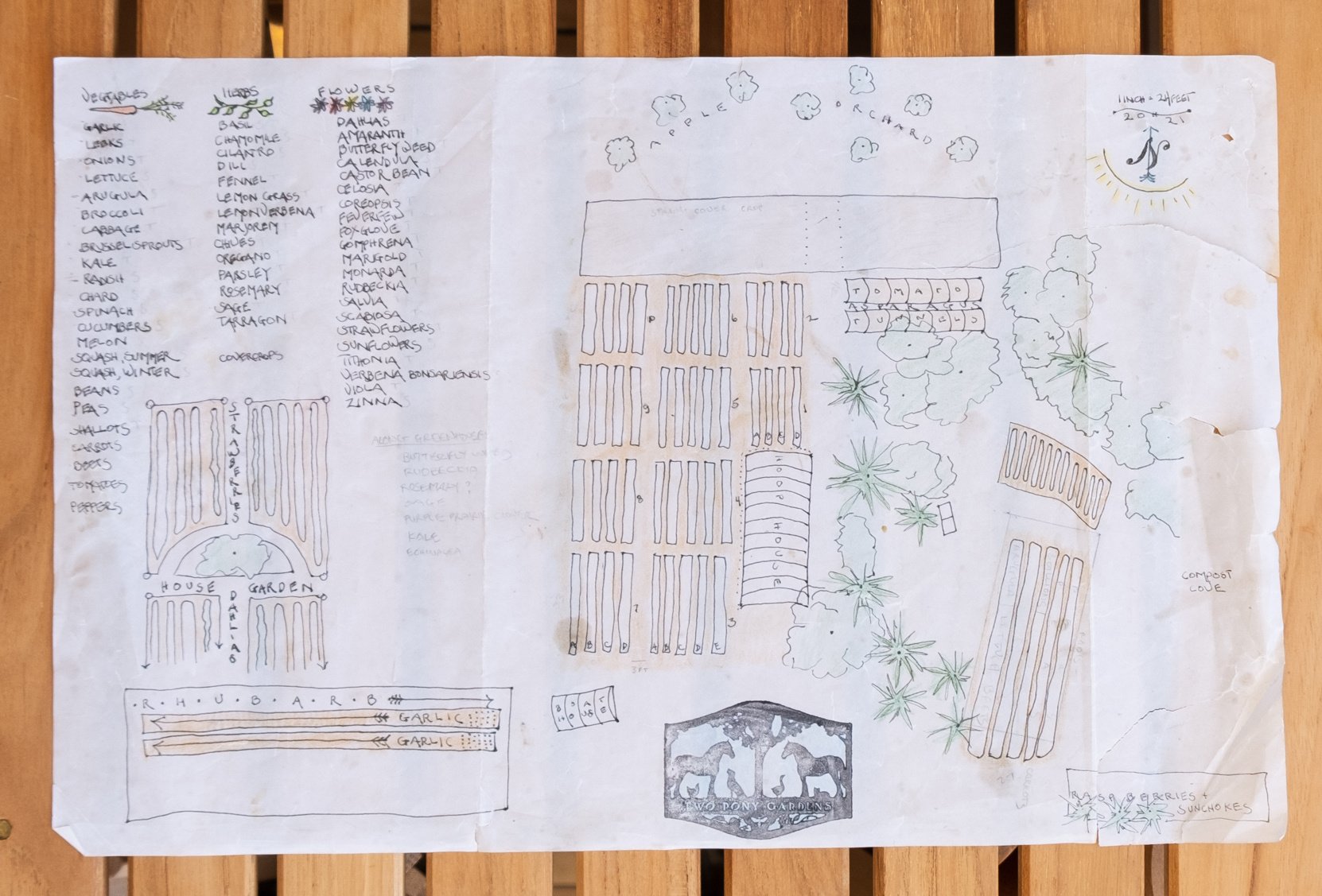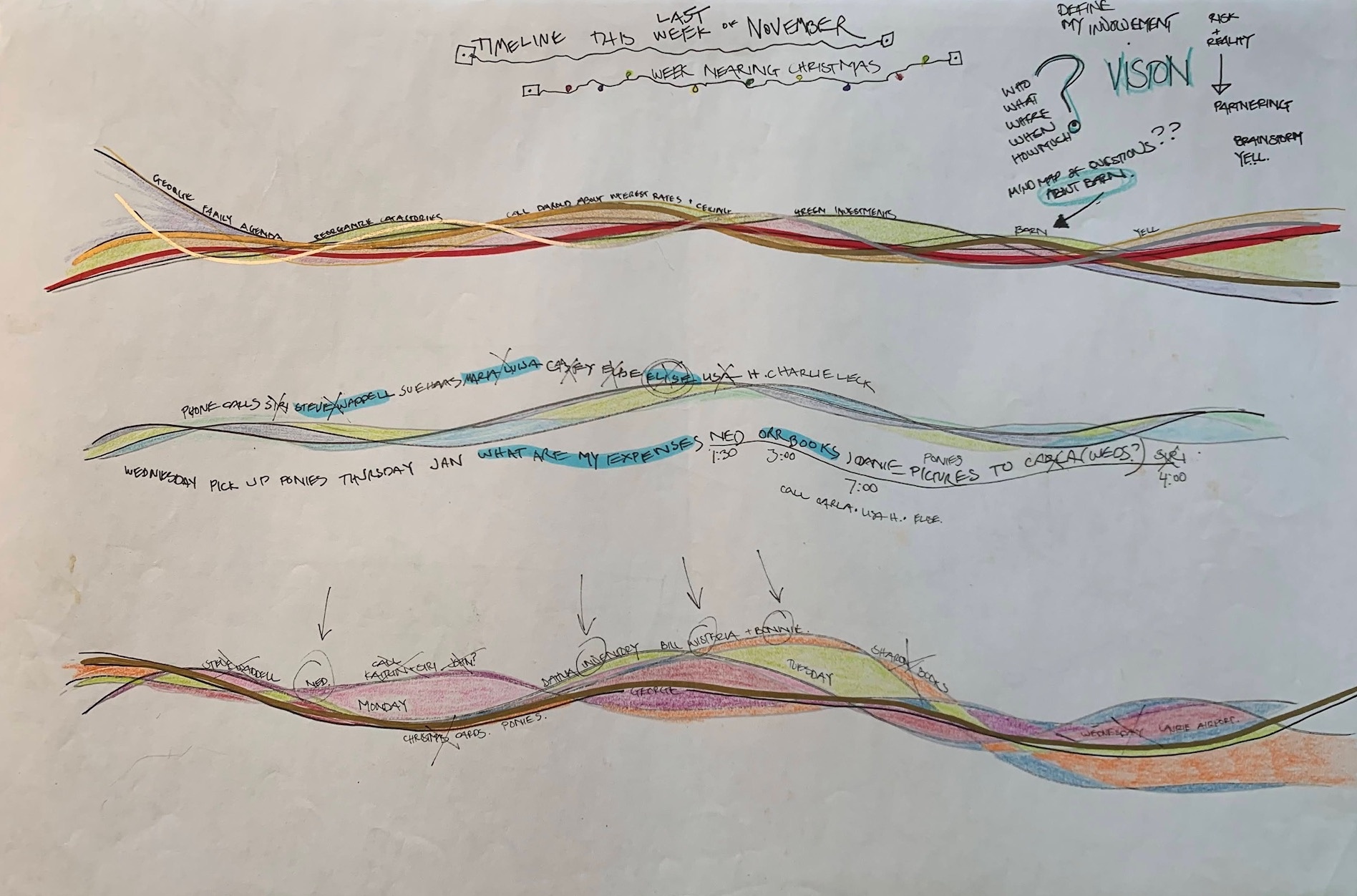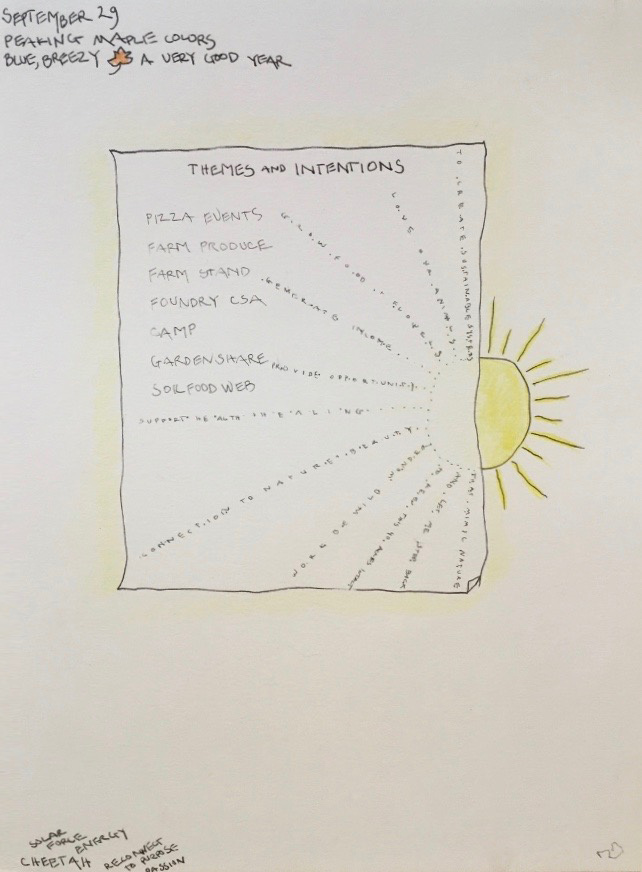Illuminating and Manifesting: How To Mind Map
- Posted on
- By Susannah
- Posted in Art Projects, Fall, how to, Spring, Summer, The Foundry At Home, Winter
- 0

At the Foundry we are lovers of lists. Of pens and paper and of plans. Of dreams, schemes, and hare-brained ideas becoming rare-brained adventures.
Every season can benefit from the making of a list, but there is something about the shifting between seasons that can really benefit from a re-ordering of the thoughts, weaving the infinite threads of what has been accomplished with what needs to be done with what desires to be experienced.
Like so many of us, Anna and and her mother Lisa are both inveterate list makers (it was actually Lisa's illuminated season-shift garden plans that inspired this post):
Unlike many of us, Anna and Lisa's "lists" often transcend the 1-2-3 crossing out of completed tasks and take on the beautiful freewheeling quality of a visualization.
Anna calls them "Mind Maps" and they are just that: a physical map of the mental load, illuminated with sketches and marginalia and often color coded with washes of watercolors or shot through with a sparkle of metallics. Sometimes, as in Lisa's landscape plans or Anna's shop sketches, they take the form of literal maps, a visual plan of a physical space, giving dimensionality, a sense of place, and projection to the mind's lift:
So, yes, a mind map can be a map. Sometimes, though, a mind map can be a way of drawing out and ordering thoughts in a way that you did not know you needed or desired them to be ordered. Perhaps consider your thoughts as coiled in your mind like beautiful magician's silks. Making a mind map can sometimes feel like mastering whatever sleight of hand allows you to pull threads of ideas out of your back pocket, connected together, magically, endlessly appearing in glorious airy swirls of color:
Sometimes it can be a snapshot of the mind on a sunny day (Lisa):
Sometimes it can just be swathes of pigment, mapping the *feeling* of the color-mind, synethesia-style (Anna):
Sometimes it starts as a simple to-do and ends up being an annotated global list of everything rattling around the brain that needs to happen outside in the next month (Susannah):
There is no wrong way to do a mind map, no way it's "supposed" to look, and nothing other than the intention of the mind and the tactile application of your hand and eye to guide you. The utility of it is in the process of it.
Sometimes—and this may be especially true for people who don't consider themselves "artists", like the person writing these words right now ;)—when some of us think of something like a "mind map", it seems like other people's brains just seem to work this way. Visual people make visual things. Artists have paints. Writers have pens. Accountants have calculators. Cowpokes have horses. And that's pretty much that. We stay in our lane. IF you're reading all of this mind map stuff and thinking: that all sounds fine but yeah, not for me...we'd really recommend trying it! Skeptics have been shocked!
The best "how to" of "mind mapping" is to drop your preconceived notions and just sit down with some supplies and see what happens.
Some gentle prompts if helpful:
- Gather your supplies Anna recommends: Pen + Pencil, a nice, tactile paper (like watercolor paper), and color—we swear by Beam Paints watercolors, these multi-purpose watercolor pencils, or these pint-sized colored pencils but feel free to use your preferred pigment.
- Create a time, space, and place where you can map comfortably, uninterrupted.
- Set an intention. What do you want to map out? What feels like it is asking for attention in your mind (requests for attention could look like: something that feels heavy or chaotic, something that lacks clarity or deserves focus, or something you want to celebrate or resonate more deeply with). Or, another way of looking at it: what is the topic/theme/thing you want to engage with?
- Write this intention in the center or corner of the paper. Use pen or pencil, write in words, symbols, or little drawings.
- Add things that correlate to the intention around it and connect them in a way that feels true to you. If you're mapping a garden plan, you might want to include the soil prep you need to do. If you're mapping your weekend packing list, you might want to include the destinations you envision going. Notice how connections are formed and how they stem from, grow with, and return to each other. Thoughts are not hierarchical, they are interrelationary.
- Use curved lines + color. Intertwining lines and use of color aren't just pretty, they help the brain manifest and expand on connections. Some of us start with color and then flesh in the concepts, others start with words/lines/images/symbols and forge additional connections using color as a tool.
- Don't worry about "messing it up". No such thing. This can be HARD for some of us.
- Just do it. Who knows what it will look like! But we bet it will feel good.
|






This is so inspiring and SO beautiful!